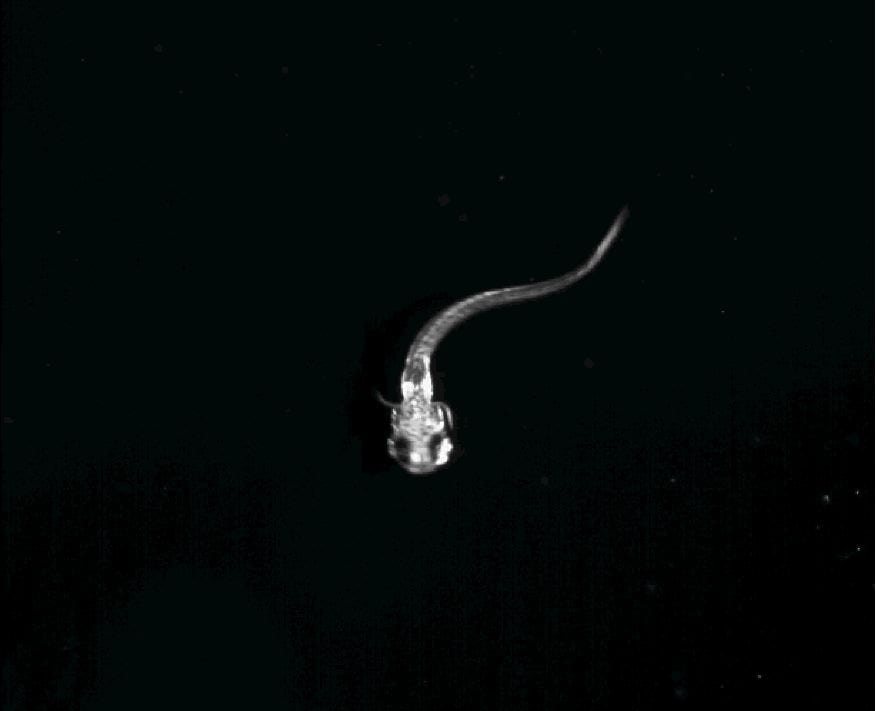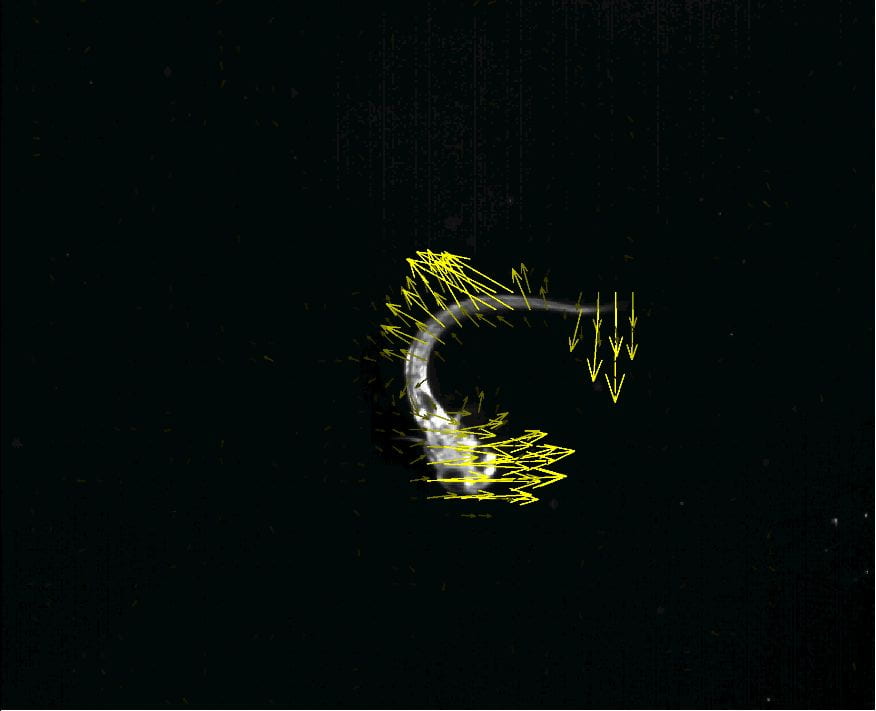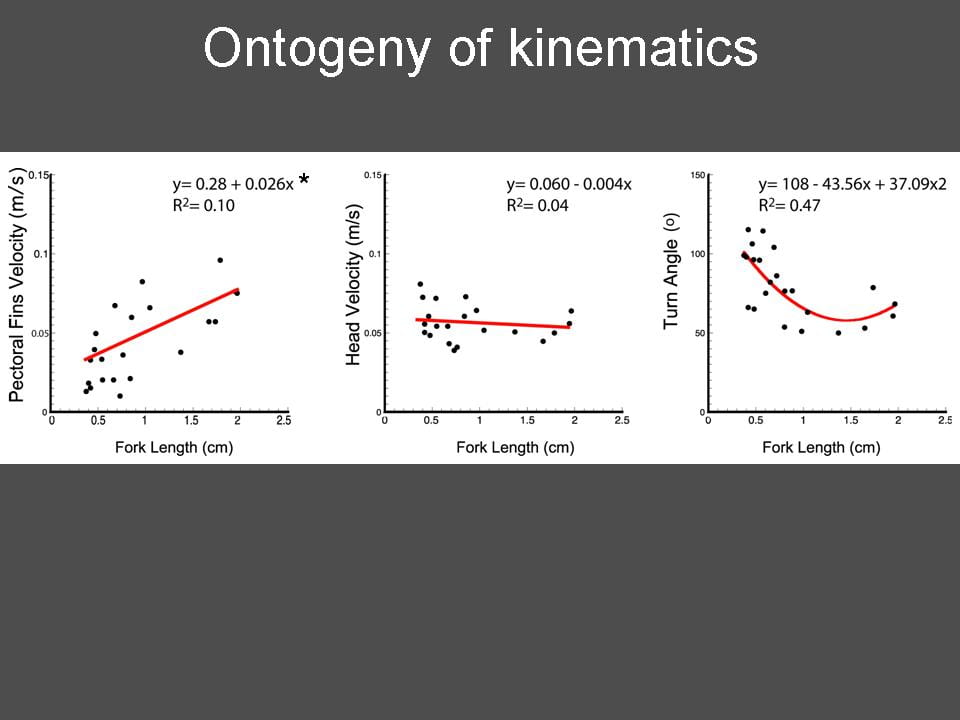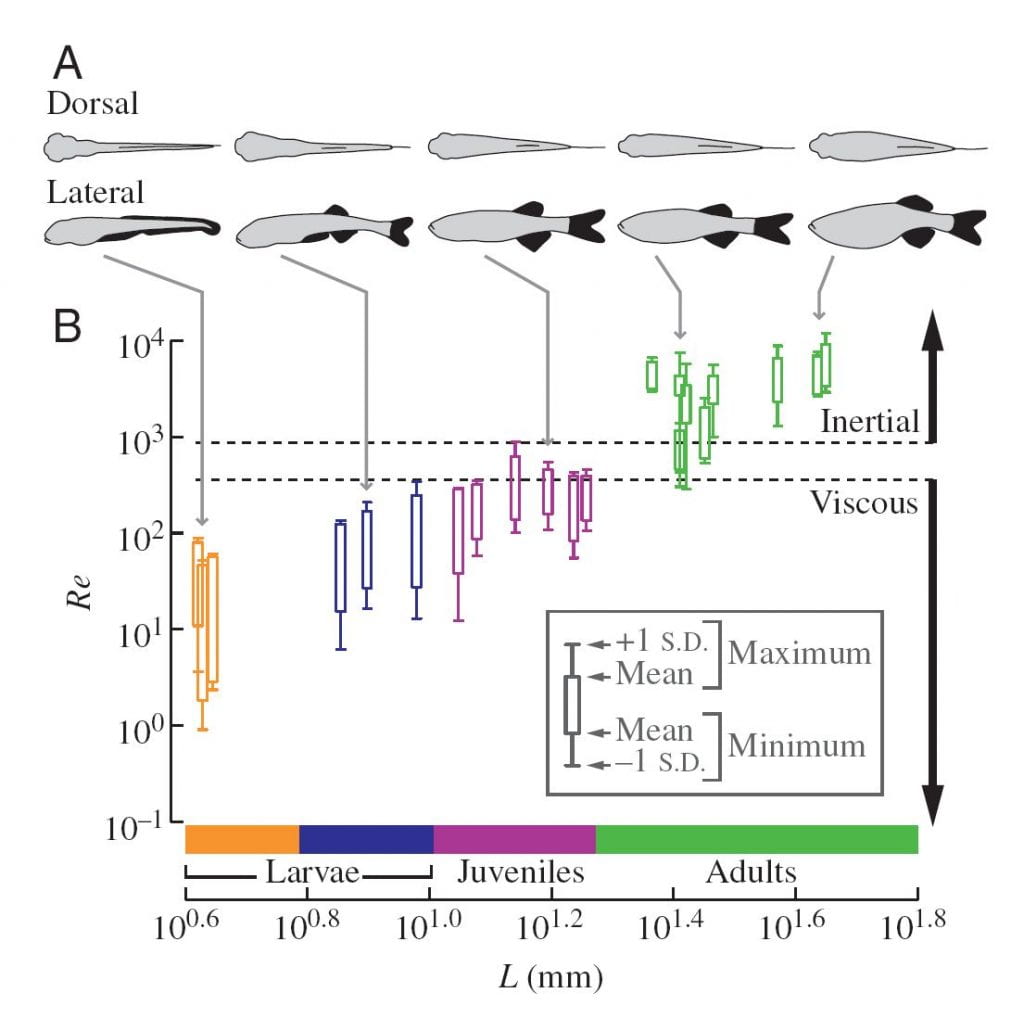Ontogeny of Locomotor Function
The ontogeny of fish locomotion is one focus of research in our laboratory, and a number of our recent papers address the ontogeny of locomotor function in zebrafish. See McHenry and Lauder (2005, 2006) and Danos and Lauder (2007).
We use high-speed video to quantify motion of the body and fins throughout development in zebrafish, and have developed an image-correlation approach to analyzing body and fin kinematics. See Lauder and Madden (2008) and Danos and Lauder (2007). Both coasting behavior as well as routine turns have been studied, as well as research involving manipulations of the viscosity in which developing zebrafish swim.



